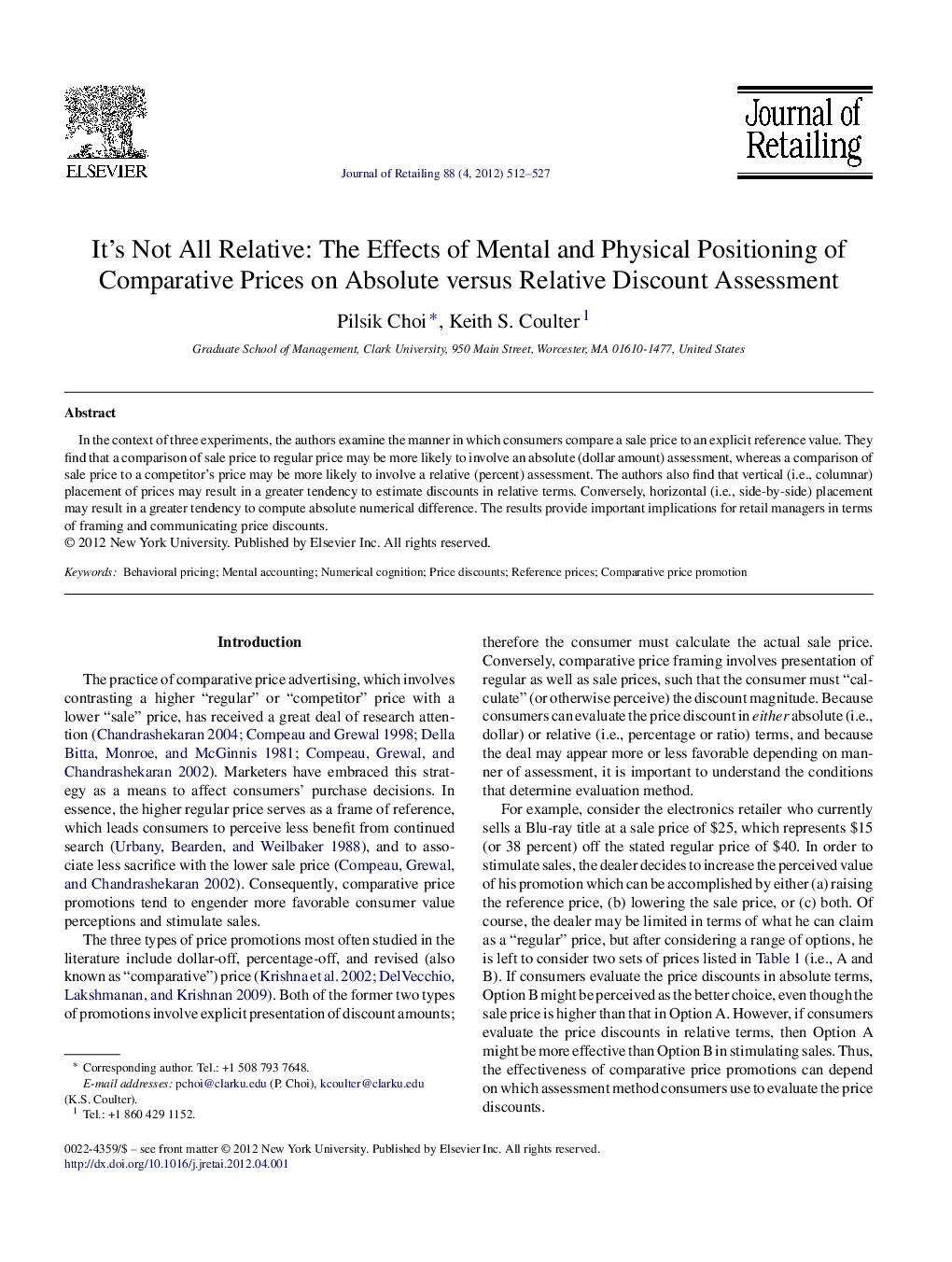| Article ID | Journal | Published Year | Pages | File Type |
|---|---|---|---|---|
| 886329 | Journal of Retailing | 2012 | 16 Pages |
In the context of three experiments, the authors examine the manner in which consumers compare a sale price to an explicit reference value. They find that a comparison of sale price to regular price may be more likely to involve an absolute (dollar amount) assessment, whereas a comparison of sale price to a competitor's price may be more likely to involve a relative (percent) assessment. The authors also find that vertical (i.e., columnar) placement of prices may result in a greater tendency to estimate discounts in relative terms. Conversely, horizontal (i.e., side-by-side) placement may result in a greater tendency to compute absolute numerical difference. The results provide important implications for retail managers in terms of framing and communicating price discounts.
Graphical abstractFigure optionsDownload full-size imageDownload as PowerPoint slideHighlights► A comparison of a retailer's price to a competitor's price is more likely to involve a relative assessment than an absolute assessment. ► A comparison of a sale price to a regular price is more likely to involve an absolute assessment than a relative assessment. ► Vertical placement of comparative prices leads consumers to assess price discounts in relative terms than in absolute terms. ► Horizontal placement of comparative prices leads consumers to assess price discounts in absolute terms than in relative terms.
